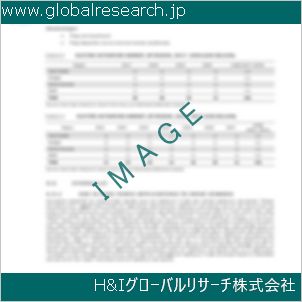Table of Contents
1 Industry Overview of Nickelcarbonyl
1.1 Definition and Specifications of Nickelcarbonyl
1.1.1 Definition of Nickelcarbonyl
1.1.2 Specifications of Nickelcarbonyl
1.2 Classification of Nickelcarbonyl
1.3 Applications of Nickelcarbonyl
1.3.1 Nuclear Application
1.3.2 Non-Nuclear Application
1.4 Industry Chain Structure of Nickelcarbonyl
1.5 Industry Overview and Major Regions Status of Nickelcarbonyl
1.5.1 Industry Overview of Nickelcarbonyl
1.5.2 Global Major Regions Status of Nickelcarbonyl
1.6 Industry Policy Analysis of Nickelcarbonyl
1.7 Industry News Analysis of Nickelcarbonyl
2 Manufacturing Cost Structure Analysis of Nickelcarbonyl
2.1 Raw Material Suppliers and Price Analysis of Nickelcarbonyl
2.2 Equipment Suppliers and Price Analysis of Nickelcarbonyl
2.3 Labor Cost Analysis of Nickelcarbonyl
2.4 Other Costs Analysis of Nickelcarbonyl
2.5 Manufacturing Cost Structure Analysis of Nickelcarbonyl
2.6 Manufacturing Process Analysis of Nickelcarbonyl
3 Technical Data and Manufacturing Plants Analysis of Nickelcarbonyl
3.1 Capacity and Commercial Production Date of Global Nickelcarbonyl Major Manufacturers in 2023
3.2 Manufacturing Plants Distribution of Global Nickelcarbonyl Major Manufacturers in 2023
3.3 R&D Status and Technology Source of Global Nickelcarbonyl Major Manufacturers in 2023
3.4 Raw Materials Sources Analysis of Global Nickelcarbonyl Major Manufacturers in 2023
4 Capacity, Production and Revenue Analysis of Nickelcarbonyl by Regions, Types and Manufacturers
4.1 Global Capacity, Production and Revenue of Nickelcarbonyl by Regions 2019-2024
4.2 Global and Major Regions Capacity, Production, Revenue and Growth Rate of Nickelcarbonyl 2019-2024
4.3 Global Capacity, Production and Revenue of Nickelcarbonyl by Types 2019-2024
4.4 Global Capacity, Production and Revenue of Nickelcarbonyl by Manufacturers 2019-2024
5 Price, Cost, Gross and Gross Margin Analysis of Nickelcarbonyl by Regions, Types and Manufacturers
5.1 Price, Cost, Gross and Gross Margin Analysis of Nickelcarbonyl by Regions 2019-2024
5.2 Price, Cost, Gross and Gross Margin Analysis of Nickelcarbonyl by Types 2019-2024
5.3 Price, Cost, Gross and Gross Margin Analysis of Nickelcarbonyl by Manufacturers 2019-2024
6 Consumption Volume, Consumption Value and Sale Price Analysis of Nickelcarbonyl by Regions, Types and Applications
6.1 Global Consumption Volume and Consumption Value of Nickelcarbonyl by Regions 2019-2024
6.2 Global and Major Regions Consumption Volume, Consumption Value and Growth Rate of Nickelcarbonyl 2019-2024
6.3 Global Consumption Volume and Consumption Value of Nickelcarbonyl by Types 2019-2024
6.4 Global Consumption Volume and Consumption Value of Nickelcarbonyl by Applications 2019-2024
6.5 Sale Price of Nickelcarbonyl by Regions 2019-2024
6.6 Sale Price of Nickelcarbonyl by Types 2019-2024
6.7 Sale Price of Nickelcarbonyl by Applications 2019-2024
6.8 Market Share Analysis of Nickelcarbonyl by Different Sale Price Levels
7 Supply, Import, Export and Consumption Analysis of Nickelcarbonyl
7.1 Supply, Consumption and Gap of Nickelcarbonyl 2019-2024
7.2 Global Capacity, Production, Price, Cost, Revenue, Supply, Import, Export and Consumption of Nickelcarbonyl 2019-2024
7.3 USA Capacity, Production, Price, Cost, Revenue, Supply, Import, Export and Consumption of Nickelcarbonyl 2019-2024
7.4 EU Capacity, Production, Price, Cost, Revenue, Supply, Import, Export and Consumption of Nickelcarbonyl 2019-2024
7.5 China Capacity, Production, Price, Cost, Revenue, Supply, Import, Export and Consumption of Nickelcarbonyl 2019-2024
7.6 Japan Capacity, Production, Price, Cost, Revenue, Supply, Import, Export and Consumption of Nickelcarbonyl 2019-2024
8 Major Manufacturers Analysis of Nickelcarbonyl
8.1 Manufacturer One
8.1.1 Company Profile
8.1.2 Product Picture and Specifications
8.1.2.1 Type I
8.1.2.2 Type II
8.1.2.3 Type III
8.1.3 Capacity, Production, Price, Cost, Gross and Revenue
8.1.4 Contact Information
8.2 Manufacturer Two
8.2.1 Company Profile
8.2.2 Product Picture and Specifications
8.2.2.1 Type I
8.2.2.2 Type II
8.2.2.3 Type III
8.2.3 Capacity, Production, Price, Cost, Gross and Revenue
8.2.4 Contact Information
8.3 Manufacturer Three
8.3.1 Company Profile
8.3.2 Product Picture and Specifications
8.3.2.1 Type I
8.3.2.2 Type II
8.3.2.3 Type III
8.3.3 Capacity, Production, Price, Cost, Gross and Revenue
8.3.4 Contact Information
8.4 Manufacturer Four
8.4.1 Company Profile
8.4.2 Product Picture and Specifications
8.4.2.1 Type I
8.4.2.2 Type II
8.4.2.3 Type III
8.4.3 Capacity, Production, Price, Cost, Gross and Revenue
8.4.4 Contact Information
8.5 Manufacturer Five
8.5.1 Company Profile
8.5.2 Product Picture and Specifications
8.5.2.1 Type I
8.5.2.2 Type II
8.5.2.3 Type III
8.5.3 Capacity, Production, Price, Cost, Gross and Revenue
8.5.4 Contact Information
…
9 Marketing Trader or Distributor Analysis of Nickelcarbonyl
9.1 Marketing Channels Status of Nickelcarbonyl
9.2 Traders or Distributors with Contact Information of Nickelcarbonyl by Regions
9.3 Ex-work Price, Channel Price and End Buyer Price Analysis of Nickelcarbonyl
9.4 Regional Import, Export and Trade Analysis of Nickelcarbonyl
10 Industry Chain Analysis of Nickelcarbonyl
10.1 Upstream Major Raw Materials Suppliers Analysis of Nickelcarbonyl
10.1.1 Major Raw Materials Suppliers with Contact Information Analysis of Nickelcarbonyl
10.1.2 Major Raw Materials Suppliers with Supply Volume Analysis of Nickelcarbonyl by Regions
10.2 Upstream Major Equipment Suppliers Analysis of Nickelcarbonyl
10.2.1 Major Equipment Suppliers with Contact Information Analysis of Nickelcarbonyl
10.2.2 Major Equipment Suppliers with Product Pictures Analysis of Nickelcarbonyl by Regions
10.3 Downstream Major Consumers Analysis of Nickelcarbonyl
10.3.1 Major Consumers with Contact Information Analysis of Nickelcarbonyl
10.3.2 Major Consumers with Consumption Volume Analysis of Nickelcarbonyl by Regions
10.4 Supply Chain Relationship Analysis of Nickelcarbonyl
11 Development Trend of Analysis of Nickelcarbonyl
11.1 Capacity, Production and Revenue Forecast of Nickelcarbonyl by Regions and Types
11.1.1 Global Capacity, Production and Revenue of Nickelcarbonyl by Regions 2024-2029
11.1.2 Global and Major Regions Capacity, Production, Revenue and Growth Rate of Nickelcarbonyl 2024-2029
11.1.3 Global Capacity, Production and Revenue of Nickelcarbonyl by Types 2024-2029
11.2 Consumption Volume and Consumption Value Forecast of Nickelcarbonyl by Regions, Types and Applications
11.2.1 Global Consumption Volume and Consumption Value of Nickelcarbonyl by Regions 2024-2029
11.2.2 Global and Major Regions Consumption Volume, Consumption Value and Growth Rate of Nickelcarbonyl 2024-2029
11.2.3 Global Consumption Volume and Consumption Value of Nickelcarbonyl by Types 2024-2029
11.2.4 Global Consumption Volume and Consumption Value of Nickelcarbonyl by Applications 2024-2029
11.3 Supply, Import, Export and Consumption Forecast of Nickelcarbonyl
11.3.1 Supply, Consumption and Gap of Nickelcarbonyl 2024-2029
11.3.2 Global Capacity, Production, Price, Cost, Revenue, Supply, Import, Export and Consumption of Nickelcarbonyl 2024-2029
11.3.3 USA Capacity, Production, Price, Cost, Revenue, Supply, Import, Export and Consumption of Nickelcarbonyl 2024-2029
11.3.4 EU Capacity, Production, Price, Cost, Revenue, Supply, Import, Export and Consumption of Nickelcarbonyl 2024-2029
11.3.5 China Capacity, Production, Price, Cost, Revenue, Supply, Import, Export and Consumption of Nickelcarbonyl 2024-2029
11.3.6 Japan Capacity, Production, Price, Cost, Revenue, Supply, Import, Export and Consumption of Nickelcarbonyl 2024-2029
12 New Project Investment Feasibility Analysis of Nickelcarbonyl
12.1 New Project SWOT Analysis of Nickelcarbonyl
12.2 New Project Investment Feasibility Analysis of Nickelcarbonyl
13 Conclusion of the Global Nickelcarbonyl (CAS 13463-39-3) Industry 2024 Market Research Report
| ※参考情報 ニッケルカルボニルは、化学式が Ni(CO)₄ で表される有機金属化合物であり、特にニッケルと一酸化炭素から構成されています。この化合物は、無色の気体または微黄色の液体であり、非常に揮発性が高く、特異な臭気を持っています。ニッケルカルボニルは、1980年代から広く利用されている重要な化学物質の一つで、さまざまな工業用途で使用されてきました。 ニッケルカルボニルの特徴の一つは、その構造にあります。ニッケルカルボニルは、ニッケル原子が四つの一酸化炭素分子と配位結合を形成しているため、四面体形状の分子構造を持っています。この配位結合のために、ニッケルカルボニルは非常に安定した構造を持ち、特定の条件下でのみ分解します。このような特性から、ニッケルカルボニルは、金属ニッケルを製造するための原材料として、またはニッケルの化学的性質を利用した反応において重要な役割を果たします。 種類としては、ニッケルカルボニルには純粋な状態以外にも、様々な混合物や配合物が存在します。これらの変種は、ニッケルの化学的特性や一酸化炭素との反応に基づいて分かれていますが、通常は同じ基本的性質を持つため、それぞれの用途に応じた特定の条件下で利用されることが一般的です。 ニッケルカルボニルの用途は多岐にわたります。その一つが、金属ニッケルの製造プロセスです。ニッケルカルボニルは、ガス状から表面に吸着させた後に熱分解されることで、高純度のニッケル粉末を生成することができます。このプロセスは、効率的で高品質なニッケルの生産を可能にし、特に電子部品や合金の製造において重要です。 また、ニッケルカルボニルは、触媒としても利用されます。一部の化学反応において、ニッケルカルボニルは反応の速度を向上させる効果があります。特に有機合成反応や水素化反応の触媒として利用されることが多く、化学工業における効率向上に寄与しています。 さらに、ニッケルカルボニルは、ニッケルを含むアンチコロリータや電気磁気材料などの新しい材料の研究にも使用されています。これにより、より高度な技術を実現するための基盤としても期待されています。 ニッケルカルボニルには危険性も伴います。その有毒性による健康影響や、環境への影響が懸念されています。ニッケルカルボニルは、発がん性があるとされており、吸入や皮膚接触によって健康を害する可能性があります。したがって、取り扱いには十分な注意が必要であり、適切な安全対策を講じることが求められます。 関連技術としては、ニッケルカルボニルを利用した新たな触媒の開発や、ニッケル基合金の研究が進行しています。また、環境負荷を軽減するための新しい製造プロセスや廃棄物処理技術も模索されています。これにより、持続可能な開発を目指した業界の変革が求められています。 ニッケルカルボニルは、金属ニッケルの製造や様々な化学反応において重要な役割を果たしており、その利用価値は高いものです。しかし、その危険性も理解しつつ、適切な取り扱いや管理が必要となります。今後もニッケルカルボニルに関連する研究や技術の発展が期待されており、新しいアプリケーションの実現が待たれています。 |
❖ 免責事項 ❖
http://www.globalresearch.jp/disclaimer












